Online Quiz
Seasonal & Daily Temperatures
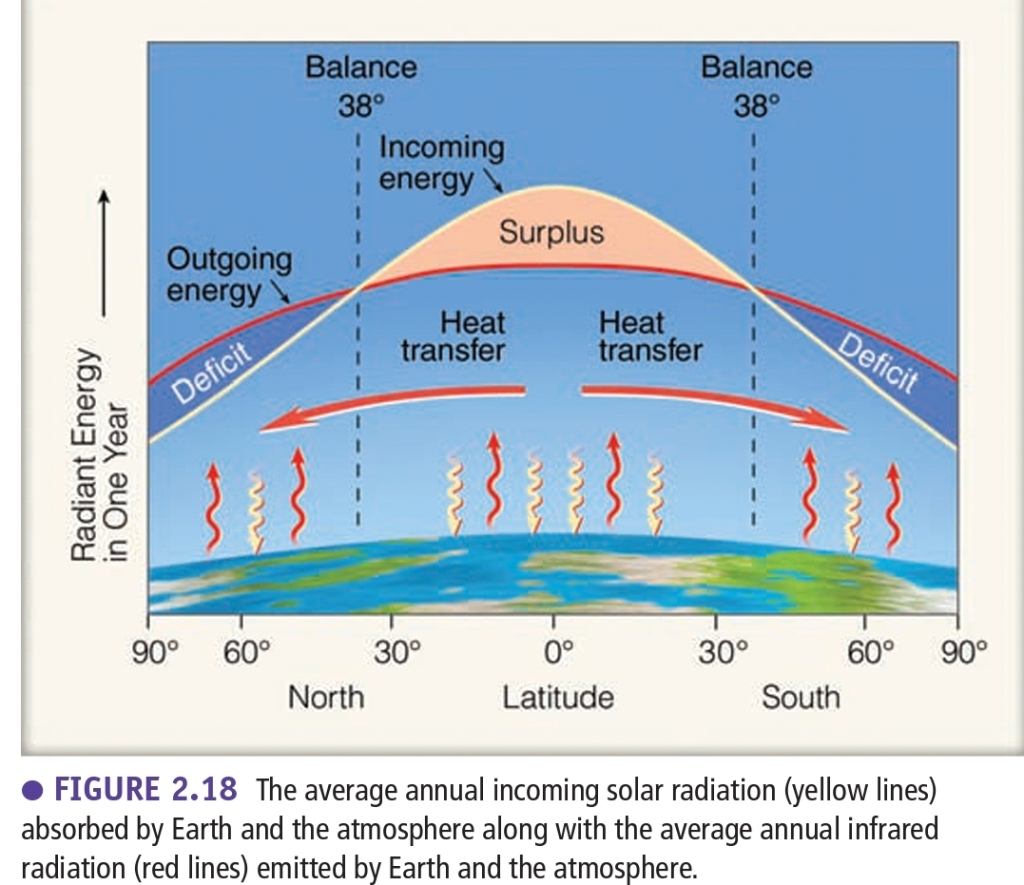
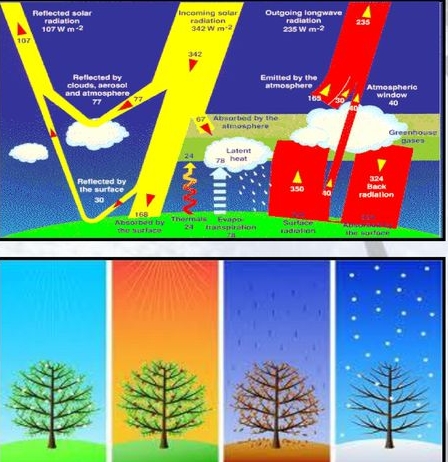
Important Terms
Circle of Illumination: Boundary separating the dark & light halves of the Earth
Earth’s Axis: Imaginary lines through the poles with Inclination 23.5°
Plane of the ecliptic: the plane of the orbit around the sun
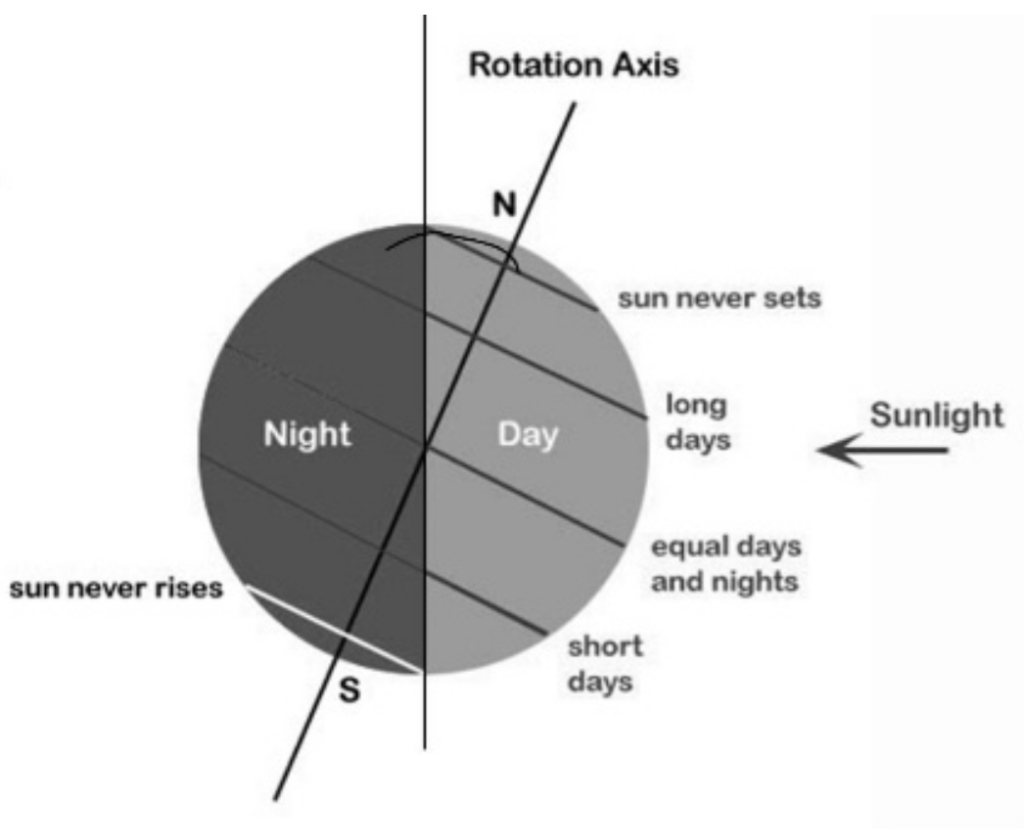
Earth-Sun relationship
The distance between the Earth & the sun
average distance = 150 million km
Because earth orbital is ellipse the actual distance varies during year:
– in January 147 MKm, closer to the sun
– in July 152 MKm, Farther from the sun
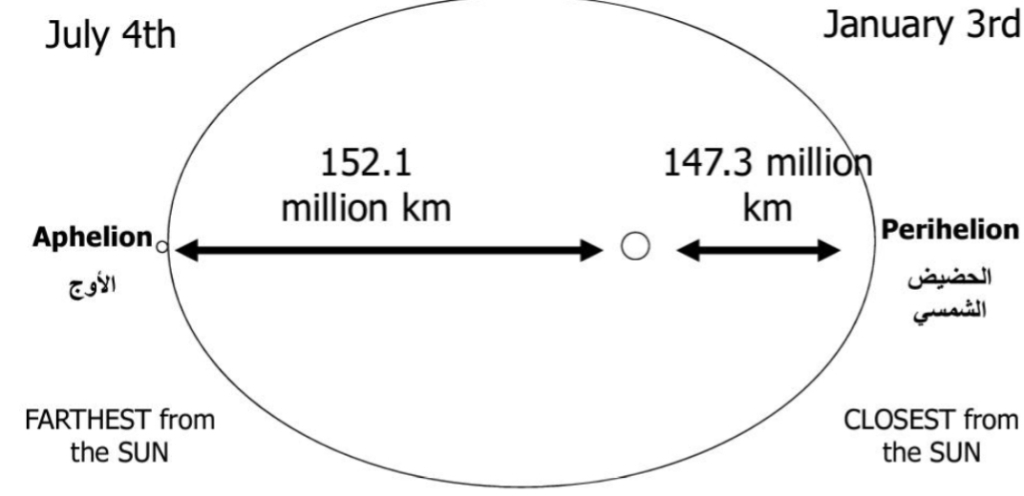
The Earth has 2 principle motions
Rotation: spinning of Earth about its axis
Revolution: The earth revolves completely around the sun in an elliptical path in 365 days, Travels at nearly 113,000 km/hr
(Elliptical Orbit – Eccentricity ≈ 0.8)
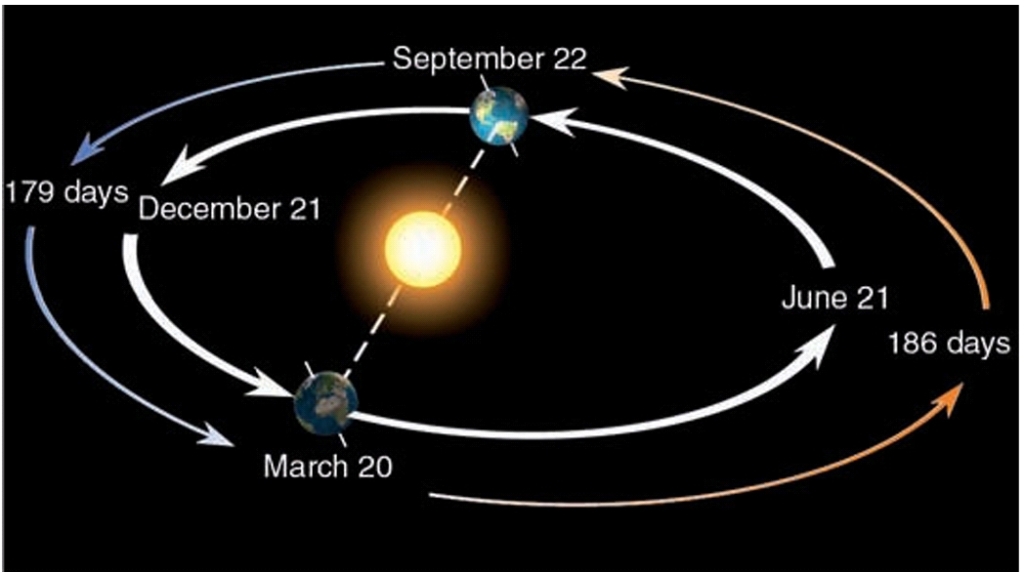
Τhe Seasons
Variations distance DO NOT cause seasonal temperature change
Without the TILT we wouldn’t have seasons
The Seasons primarily due to:
1. Change in the length of daylight
2. Gradual change in angle of the sun at noon
3. amount of energy received at surface
The seasons are regulated by energy received at the surface that determined by:
1. Angle of sunlight that strikes surface:
– Overhead, perpendicularly, or directly: is more intense (or strongest intense)
– at Angle (θ) is less intense
2. how long sun shines (daylight hours): determine how warm the surface becomes
The change in day length & sun angle happens because: earth’s Rotation (earth’s orientation to sun constantly changes)

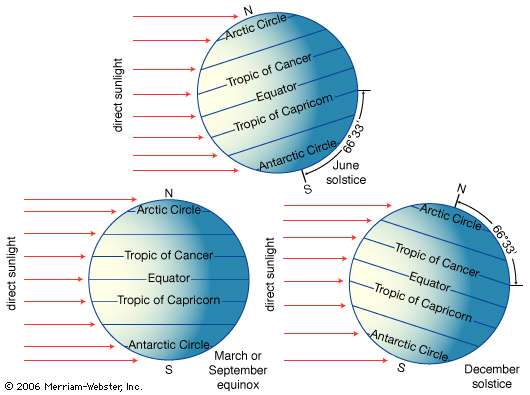
Length of Daylight & Solar Energy
During the summer in N latitudes, the sun is never very high above the horizon, so its radiant energy must pass through atm, & because of the increased cloud cover during the arctic S, much of the sunlight reflected before it reaches ground
Solar energy eventually reaches the surface in the N does not heat the surface effectively
A portion of the sun’s energy is reflected by ice & snow, while some of it melts frozen soil
The amount actually absorbed is spread over a large area. So, even though N cities experience 24 hr of continuous sunlight on June 21, they are not warmer than cities S
Overall, they receive less radiation at the surface, & what radiation they do receive does not effectively heat the surface.
The Earth intercepts only a tiny percentage of the energy given off by the sun
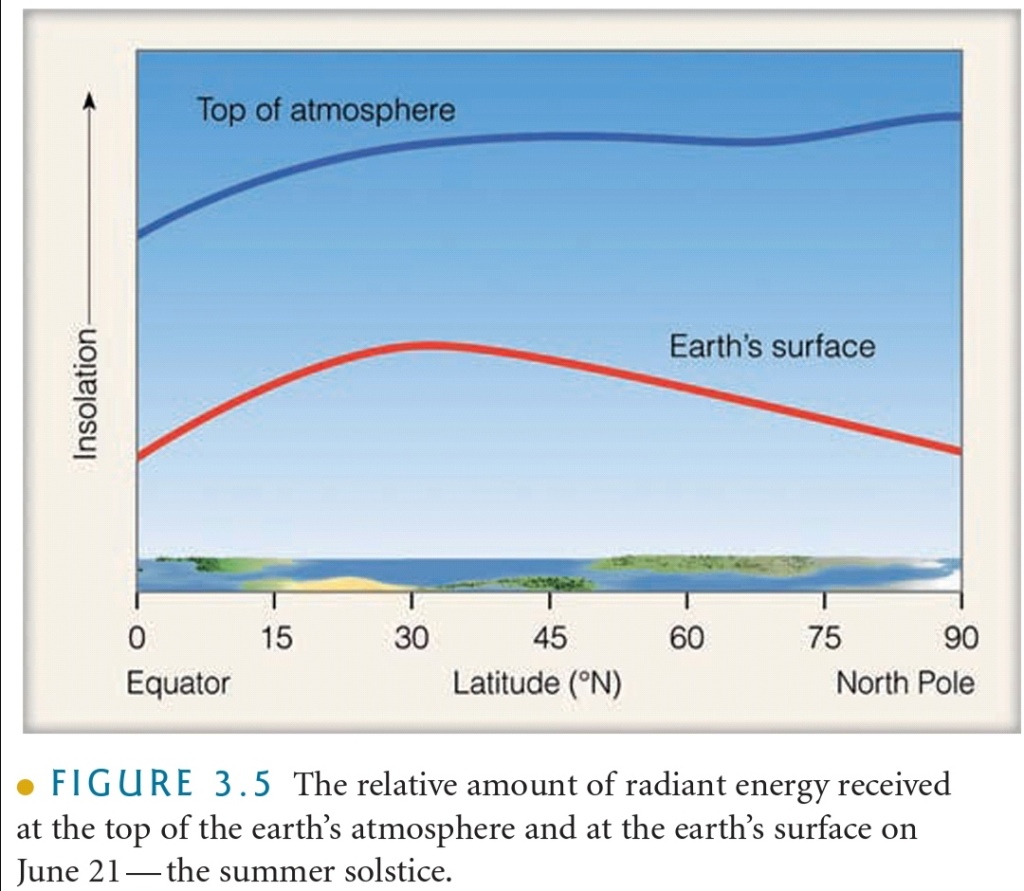
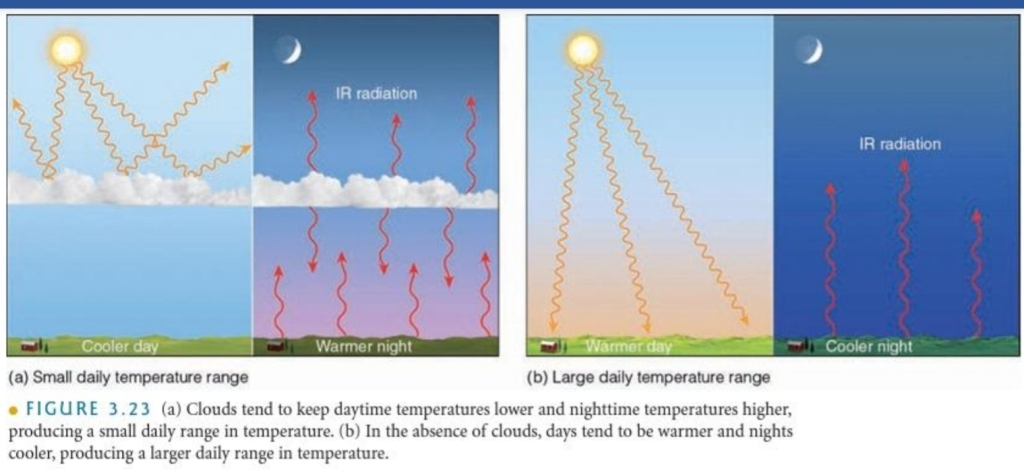

Solstice & Equinoxes
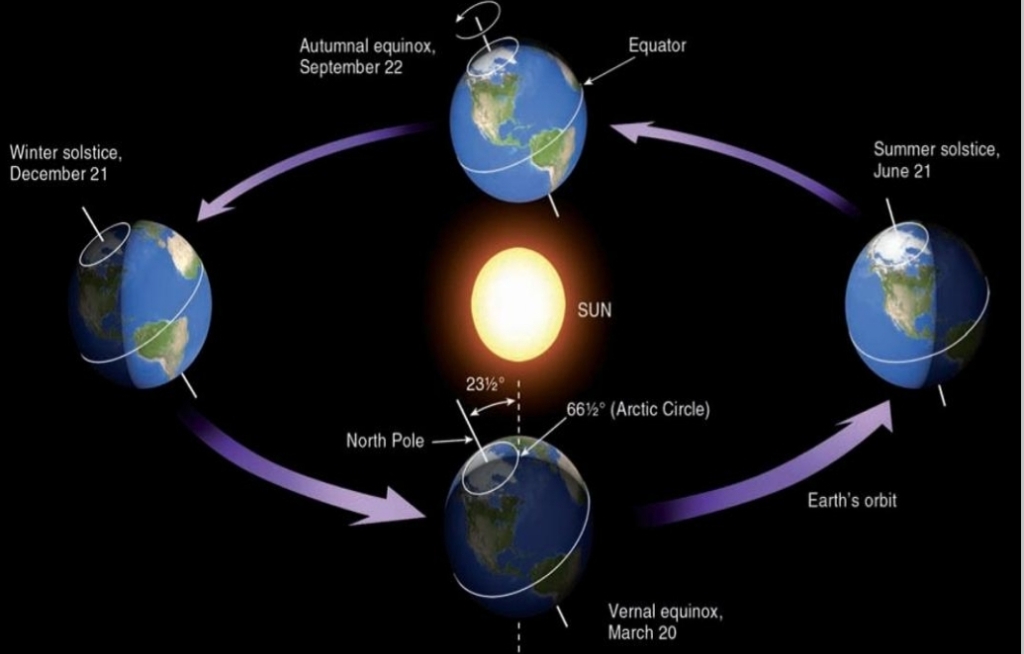
Summer Solstice
– Occurs on June 21 or 22
– Tropic of CANCER (23.5°N latitud)
– Northern limit of the Sun’s rays
– First day of NH summer
– NH tilted toward the sun
– NH location experience LONGEST day
– ΝH location experience HIGHEST Sun θ
– SH location experience SHORTEST day
– SH location experience LOWEST Sun θ
– Farther from the equator → longer period of daylight (Arctic Circle has 24hr of SUN)
Winter Solstice
– Occurs on December 21 or 22
– Tropic of CAPRICORN (23.5° S)
– Southern limit of the Sun’s rays
– First day of NH winter
– NH tilted away from Sun
– NH location experience SHORTEST day
– ΝH location experience LOWEST Sun θ
– SH location experience LONGEST day
– SH location experience HIGHEST Sun θ
– Farther from the equator → longer period of daylight (Antarctic Circle has 24hr of SUN)
Equinoxes
mid way between the Solstices
– Vertical rays strike along the equator 0°
– Earth not tilted toward or away
– Autumnal Equinox: September 22 or 23
– Spring(Vernal) Equinox: March 21 or 22

In January The coldest day, & the earth is closer to the sun (147MKm, perihelion)
In July The warmest day, & the earth is farthest from the sun (152MKm, aphelion)
Tilt
More Tilt (> 23.5°): More extreme seasons, Colder winters, & Warmer summers
Less Tilt (<23.5): More mild seasons Cooler summers, & Milder winters
Tilt = 0 (NO TILT): No Seasons
– The location of Tropic of Cancer & Capricorn shift (Ex. 30° Tilt: tropic of Cancer 30°N & tropic of Capricorn 30°S )
– The Arctic & Antarctic circles shift 90-θ (Ex. 30° Tilt: Arctic Circle 60°N & Antarctic 60°S)
Temperature
Air T is important, Why ?
It’s the first thing we usually think when we talk about “weather”
vary on different time scales: Seasonally, daily, & hourly
vary all over the globe, by quite bit

Day Vs Night
1. On a sunny day, the air near the surface warmer than air above the surface
2. On a night, the air near the surface is colder than air above the surface
Temperature Inversion: The increase in T with increasing height above the surface (on a night)
Radiational Cooling: Radiation Inversion, Nocturnal inversions
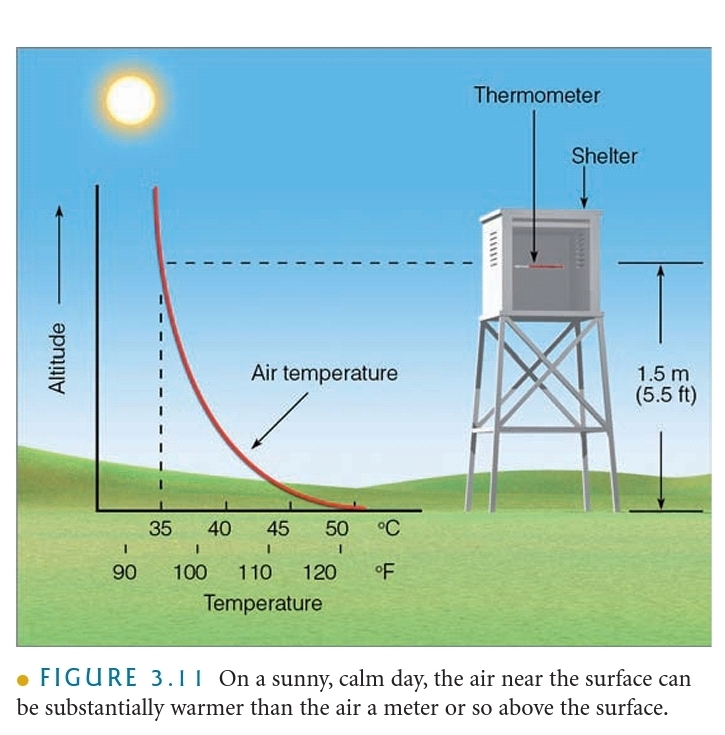
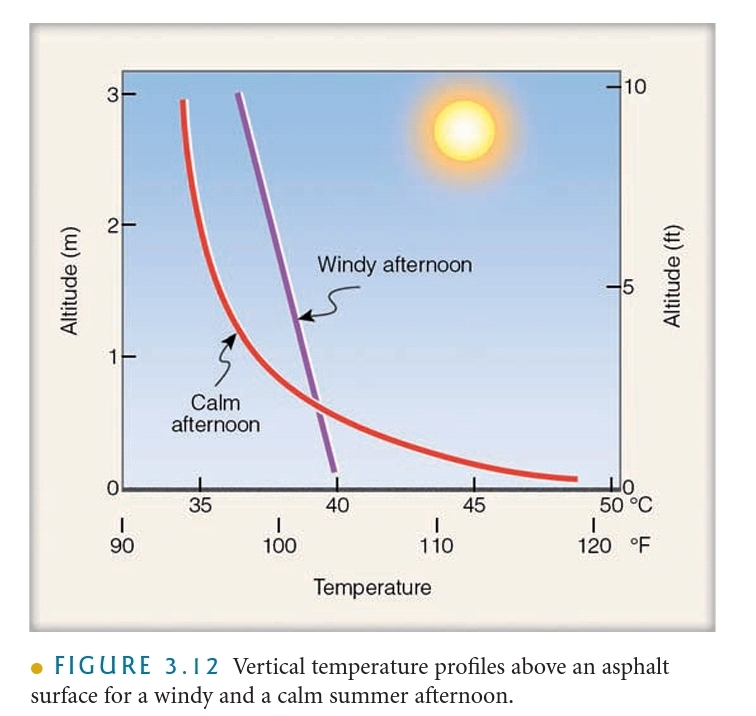
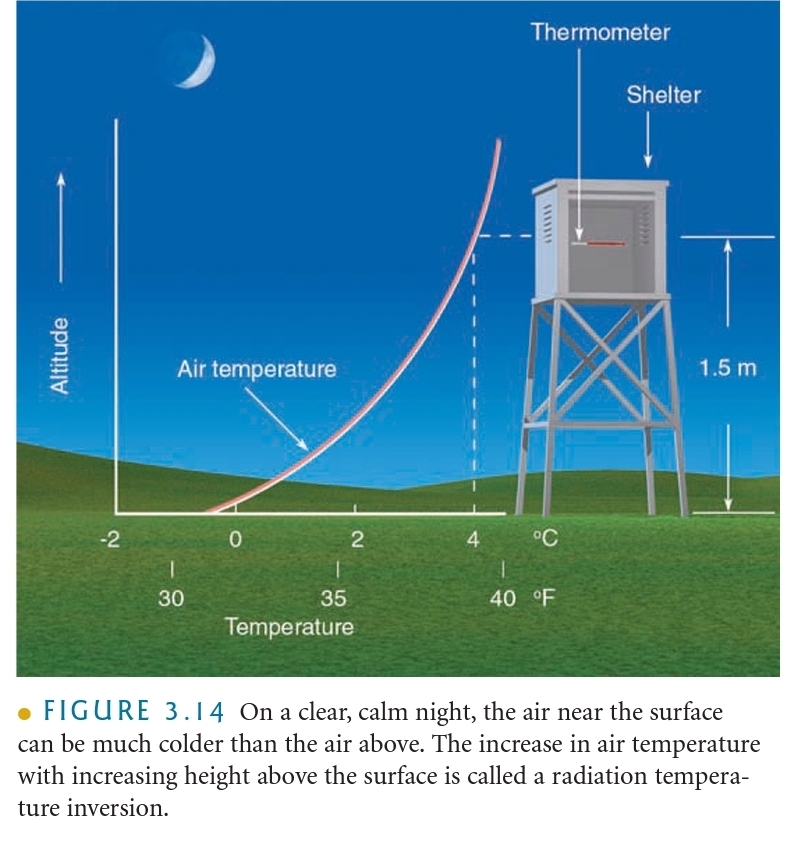
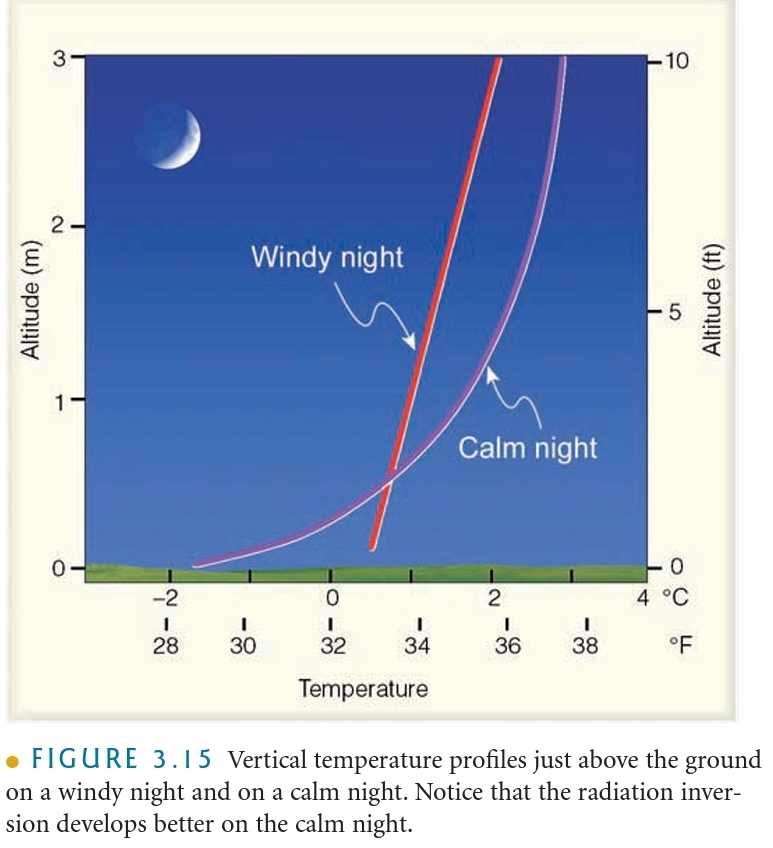

Minimum Τ before sunrise: No heat from sun, lots of IR energy radiated during night
Maximum T after noon (peak): In = out, Heat from sun + IR radiated up from the surface
What controls air temperature?
Differential Heating of Land & Water
Ocean Currents
Altitude
Geographic Position
Cloud Cover
Albedo
Land Vs Ocean
Differential Heating
Different surfaces absorb, emit, & reflect different amounts of energy, & This causes variations in air above each surface
Land HEATS or COOLS more rapidly so Variations over Land are GREATER
Ocean less variable, Why?
1. Surface T of water rises & falls slower
2. Water is highly mobile & mixes easily
3. Daily T changes are about 6m deep
4. Yearly ocean & deep lakes experience variations through layer (200-660)m thick
Land are more variable, Why?
1. Heat not penetrate deeply into soil or rock & it remains near the surface
2. Rocks are not fluid… so no mixing
3. Daily T changes are 10cm down
4. Yearly T changes reach < 15m
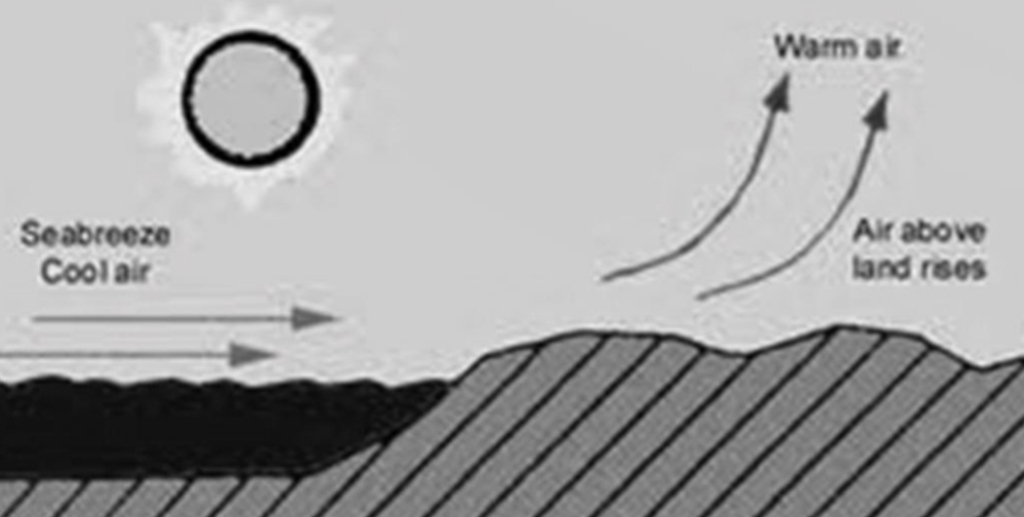
Summer Vs Winter
During summer thick layer of water is heated while only a thin layer of land is heated
During winter the shallow layer of rock cools rapidly while the deeply heated water takes a longer time to cool
as surface water cools, becomes heavier & sinks, replaced with warmer less dense water from below, So water surface T not appear to change much
Opaque Vs Transparent
land surfaces are opaque, So heat is absorbed only at the surface
Water is transparent & lets energy from the sun penetrate to a depth of several meters
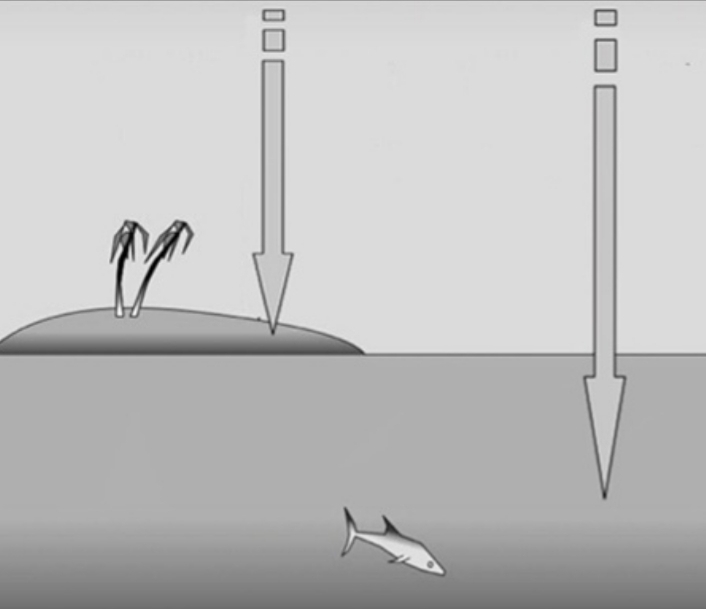
Specific Heat
amount of heat needed to raise T of 1g H₂O by 1°C (3 times greater than 1g of soil or rock)
The OCEANS require More Reheat to raise its T same amount as an equal quantity of land
Evaporation
greater from Oceans than from Land Because There’s more water molecules (Intuitive!)
Energy is required to evaporate water: When energy is used to evaporate water it is not available for heating
WATER WARMS MORE SLOWLY THAN LAND!
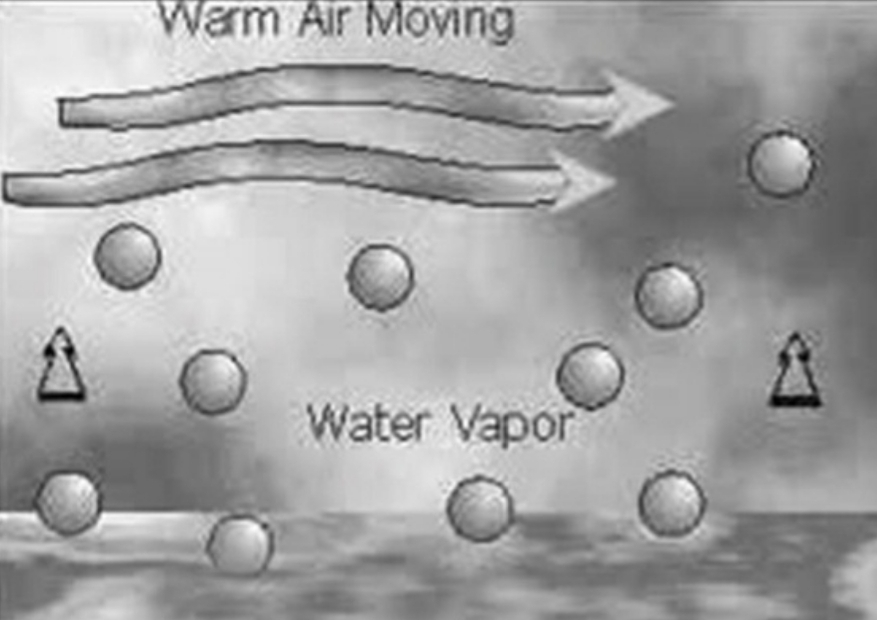
Which Hemisphere (N or S) has larger T variations? & Why?
NH, there is more ocean & little land to interrupt the oceanic & atm circulation
THE END
